Siege of Constantinople
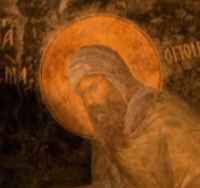
Whenever European Christians reached outwards in the Middle Ages, they found Islam. These two great religions of the book had been at war for centuries. The Christian crusades to gain control of the Holy Land and the city of Jerusalem had inspired Europe, and then the tide turned, and Muslim Turks, the Ottomans, pushed deep into once-Christian lands. All that time, religious propaganda cast a discreet veil over a flourishing web of trade and ideas passed between the rivals, and that is true even of the most epic moment in this story - the Siege of Constantinople.
May 1453, the Ottoman leader Mehmet II had dreamed of possessing Constantinople since he was a small boy. It was a vital trading crossroads at the edge of Christian Europe, protected by massive Roman walls.
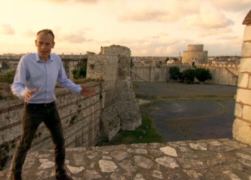
For more than 1,000 years, these were the most awesome defences in the Western world. They kept out rebels and renegades, and Islamic armies too. If a massive Arab siege in the early 700s had succeeded in breaking these walls, then there’s no reason why the armies of Islam wouldn’t have reached the North Sea.
We’ve heard of the great Wall of China - well, these were the great walls of Europe.
Mehmet II
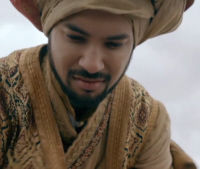
Established by the Romans on seven hills, Constantinople had always seen itself as the new Rome, and its people Roman. They were fiercely proud of its imperial past and its magnificent churches. Including the greatest one in Christendom, Hagia Sophia. The city was still a Storehouse of classical learning and ancient ritual. It was still hypnotic.
But now, it faced its fiercest threat yet. In Mehmet II, the Ottomans had a cool and calculating leader. He was a pious Muslim, though there were plenty of Christians among his army of up to 400,000 soldiers. By contrast, Constantinople was seriously undermanned. The Army defending the city numbered fewer than 5000 people. Most of Christian Europe was far too busy making money to bother to come to its aid.
Giovanni Giustiniani Longo
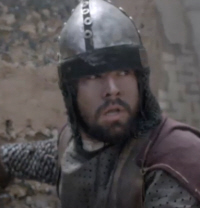
Among the few who did was Giovanni Giustiniani Longo, a mercenary from Genoa and an expert at siege warfare. As the weeks passed, the city was slowly throttled. For the people of Constantinople the days before the final attack were days of bad omens. The priests carried a huge icon of the Virgin Mary through the streets, praying for her to intercede. But the icon seemed strangely heavy, and they slipped and almost dropped it. Bad omen. Then, there was a terrible rainstorm, turning the streets into rivers, worse than anyone could ever remember. Bad omen. And finally, there was an unearthly, eerie, red glow in the sky which seemed to bathe the domes of St Sophia with the colour rather like that of human blood. You don’t get many omens worse than that.
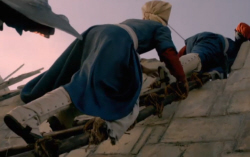
It seemed to the people of what had once been called the city of God that perhaps God was deserting them.
At 1.30 a.m. on the night of 29 May, the city came under all-out assault. Giustiniani rallied every able-bodied defender to the walls. Facing him was, well, Christian technology. Or some siege guns made for Mehmet by Hungarian and German technicians.
Constantinople managed to hold off the remorseless attackers for five hours. But then, Giustiniani was mortally wounded. Panic quickly spread amongst his exhausted men. Wave upon wave of Ottoman soldiers now smashed their way into the city.
On that final morning, Hagia Sophia was crammed with the last of the Romans. Terrified people, old men and children, nuns and noblemen, crammed in here for the final mass. Up there on the altar, the priest would be chanting and praying, and yet above their voices was the sound of the great oak doors splintering under Ottoman axes. And as the screaming inside the church got louder, and the chanting by the priests got louder, so did the sound of the axes, until finally… The doors gave way.
Fall of the Ottomans
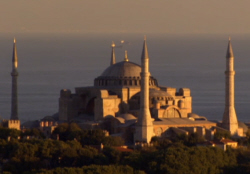
So, the most coveted city in the world was taken. And soon the great Christian cathedral of Hagia Sophia resounded to the Islamic prayers. It’s been a mosque ever since.
Later that day, a triumphant Mehmet II rode through the city. Even he was shocked by the scale of the slaughter. And so an empire which had lasted for more than 1,100 years gave way to the Ottomans. Christianity was replaced by Islam.
The news of the fall of Constantinople arrived in the rest of Europe like a thunderclap, and it spread like wildfire. But no sooner was the blood dry on the corpses of the defenders, including many heroic Genoese and Venetians, than boats were setting sail again from Genoa and from Venice back to Ottoman Istanbul, seeking terms of trade with the Sultan. Almost as soon as the gunpowder smell had faded, it was back to business as usual. Business never rests.
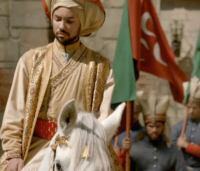
The capture of Constantinople was the Ottomans’ greatest victory. But it also marked the end of an era. This was the last great mediaeval siege. What Mehmet could not have realised is that the most advanced, pushy part of the world had already moved on. The great new cultural clash was between the rising and fiercely competitive city states of Italy.
